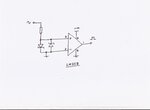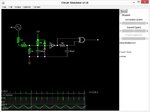jean12
Advanced Member level 2

Hello,could you please advise on the circuit I may use,I realized one with operational amplifier but no succeess I thought I could get a square wave from the comparison of sine wave(12VAC/50HZ) and 12VDC but no success,check my circuit here below.
Please help I would like to use this circuit for detecting a zero cross of sine wave and then control an AC load with a TRIAC.
I will appreciate your support!!

Please help I would like to use this circuit for detecting a zero cross of sine wave and then control an AC load with a TRIAC.
I will appreciate your support!!

Last edited by a moderator:





